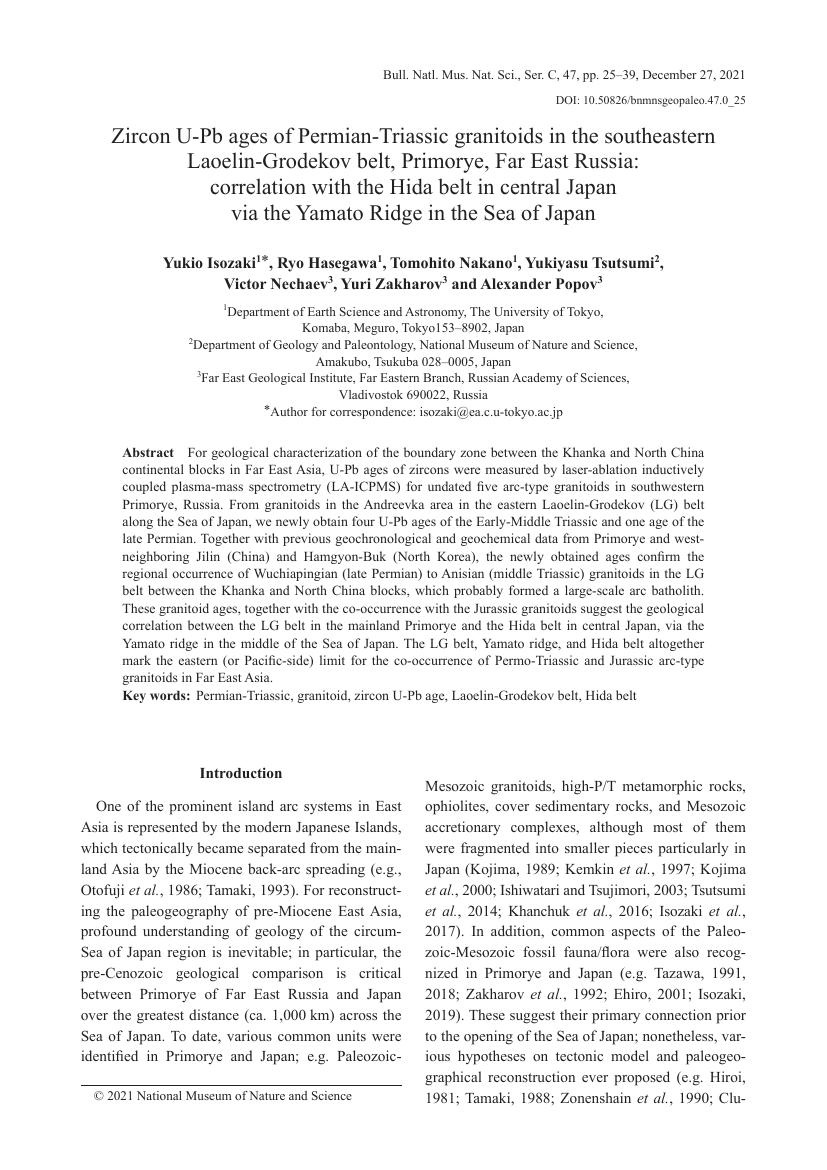- 著者
- Hikaru Sawada Tsuyoshi Iizuka Yukiyasu Tsutsumi Yukio Isozaki
- 出版者
- GEOCHEMICAL SOCIETY OF JAPAN
- 雑誌
- GEOCHEMICAL JOURNAL (ISSN:00167002)
- 巻号頁・発行日
- vol.53, no.3, pp.171-179, 2019 (Released:2019-06-11)
- 参考文献数
- 64
To understand the timing and mode of crustal production and reworking in the Archean, we performed U-Pb and Hf isotopic analyses of detrital zircon grains from the ca. 2.3 Ga Murmac Bay Group in the Rae Craton, central Canada. The zircon U-Pb ages range from 3.9 to 2.3 Ga with a significant gap interval of 3.6–3.3 Ga, indicating that felsic magmatism has semi-continuously within the craton since the early Archean. The combined U-Pb and Hf isotopic data define three distinct Hf isotope-age arrays that share a similar slope equivalent to that of typical 176Lu/177Hf ratio of continental crust, and the slope intersects the mantle evolution curve at 2.9–2.6, 3.3–3.2, and 3.8–3.6 Ga. The secular trends in zircon Hf isotopes illustrate episodic crust formation from depleted mantle during the three periods with subsequent reworking of pre-existing crusts into younger granitoids. Furthermore, these results infer that granitoid crust was rarely reworked for more than 800 million years after its formation. This finding is well explained by assuming that the Archean Rae block has grown outward from the interior by adding new crusts through subduction-related magmatism and/or by secondary accretion of exotic arc crusts. In such a tectonic framework, younger crusts were likely utilized more preferentially in crustal melting during subduction-related magmatism. These observations suggest that plate subduction has operated already in the early Archean, as early as 3.6 Ga Eoarchean.
- 著者
- Yukio Isozaki Ryo Hasegawa Tomohito Nakano Yukiyasu Tsutsumi Victor Nechaev Yuri Zakharov Alexander Popov
- 出版者
- National Museum of Nature and Sciece (National Science Museum, Tokyo)
- 雑誌
- 国立科学博物館研究報告C類(地質学・古生物学) (ISSN:18819079)
- 巻号頁・発行日
- vol.47, pp.25-39, 2021 (Released:2022-01-04)
